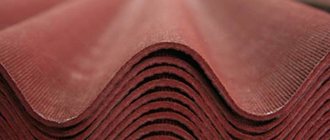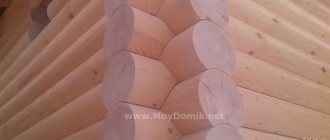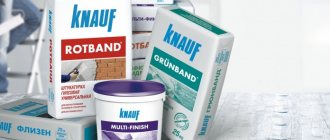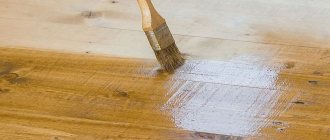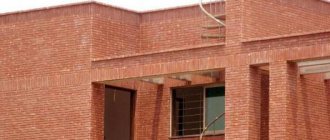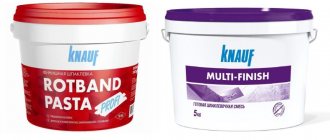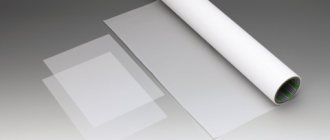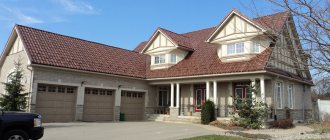Today, putty is the most popular method of finishing walls and load-bearing structures. Before the main decoration, the surface is carefully processed; one of these stages is the application of putty. In essence, this is a standard leveling of the base using special building mixtures. As experts note, Vetonit putty rightfully bears the title of the best mortar for wall finishing. Compared to other analogues, it has a lot of advantages, distinctive technical characteristics and operational properties.
Methods for applying putty
Leveling walls with putty is done in two ways:
- mechanical spraying (using special equipment);
- applying the putty mixture manually (using spatulas of different sizes).
The latter option is more often applicable for putty polymer materials. It all depends only on the personal preferences and tasks of the person performing the construction work. The putty layer should not exceed 5 mm, otherwise the coating will dry out for a long time and unevenly.
When applying several layers of putty, each subsequent layer is applied only after the previous one has completely hardened.
On video: tips on puttying walls from experts.
What is the difference between Vetonit KR and LR?
The company produces different putty compositions, and the choice is easier to make if you understand the differences between similar types. So often the choice falls between LR and CR species. Vetonit KR LR the differences between them are insignificant, so the choice becomes even more difficult. But they can all be distinguished.
What is the difference between Vetonit LR and KR, the most important distinguishing property is the constituent components. KR is made from organic substances, and LR from synthetic ones. It is difficult to say for sure that the first option is better than the second, or vice versa, but experts note that the KR type emits an unpleasant odor.
The LR species has various subspecies, which allows you to select the desired option more accurately. But the KR is also produced in small containers, which makes it possible not to worry about throwing out excess after completion of work, if 25 kilograms turned out to be too much.
There are no other points in which they differ, so the choice is mainly made from personal preferences, taking into account the characteristics of the surface being treated.
The LR species has various subspecies, which allows you to select the desired option more accurately.
Basic properties
The purpose of this putty mixture is to level walls and ceilings in dry rooms before wallpapering and painting. It is used on all types of smooth mineral surfaces and drywall. Formally it has a white (in practice slightly grayish) color, as well as its own weak specific odor.
By the way, in our village (it’s called Ryazan, maybe you’ve heard of it) it costs around 650-700 rubles for 25 kg.
It should be remembered that it is not moisture resistant, and is not suitable as a base for laying tiles or as an adhesive for anything. For example, some people manage to glue ceiling plinths onto it. This cannot be done. Its structure is quite loose and fragile, which, however, does not affect its ability to hold wallpaper on itself, but can play a fatal role when trying, for example, to seal the joints of HA sheets with it.
Water consumption is 9 liters per 25 kg bag. The mixture is stirred using a drill or a hammer drill with a mixer until it becomes sour cream, after which it is allowed to brew for 10 minutes. This time is needed for better dissolution of the binder. It is noticed that after these 10 minutes the mixture thickens a little. Then it is mixed again.
Again, a separate article will be published about the technique of puttying walls and ceilings, the topic is very important, so subscribing to updates is a sacred thing!)) The article will contain a couple of my know-how, and I will just use Vetonit. Now is the time to find out what are the secrets of his popularity?
Types of putties and their descriptions
Vetonit putty is available in several types. Each product has its own unique composition and purpose. Thus, the following groups of materials can be distinguished:
- VH, V, TT - with these marks, mixtures that are made on the basis of cement are released for sale. Materials of this group are excellent for any type of premises; they can be used in the bathroom, kitchen and toilet (where there is high humidity).
- LR and KR - these markings indicate that the putty mixtures are intended for final leveling of walls and ceilings, resulting in a coating suitable for subsequent painting or wallpapering. Materials of this group cannot be used in rooms with high levels of humidity.
Vetonit VH
This type of product is best suited for use in conditions of high humidity. Vetonit vh putty, in addition to its main task of preparing the surface for subsequent painting, performs a protective function - it prevents the appearance of condensation on ceilings and load-bearing structures in rooms with high air humidity.
The product is presented in two versions: white and gray. The white model of Vetonit vh putty is simply irreplaceable if the surface is planned to be painted. The second option is used as a primary layer before laying tiles.
The main feature of this putty mixture is the ability to be used on surfaces made of a wide variety of materials. As the instructions say, the finishing putty can be used on plastered, concrete, stone (brick) walls and bases made of expanded clay, foam aerated concrete, and gas silicate blocks.
Vetonit LR and LR+
Vetonit finishing putty is in high demand on the building materials market; it has a unique composition, low cost and is easy to use. The Weber Vetonit lr putty model is designed for finishing dry rooms, therefore, compared to other brand products, it has a more viscous and dense structure. After applying the Vetonit finishing putty, they begin wallpapering the walls or painting work using specialized highly pigmented paints.
It is worth noting that this product is not suitable for leveling non-standard, volumetric planes, as well as large-sized objects. This is how most finishing compositions work, whose main task is to reduce the sharpness of the transitions between layers of plaster and paint and minimize surface unevenness. White base putty is best suited for plaster and chipboard surfaces.
The putty is available in different configurations, most often it can be found in a powder version in 25 kg bags. You can also see a ready-made putty mixture that does not need to be diluted with water.
There is also a product Vetonit LR+. This is a polymer putty from this collection. Due to its unique composition, it is ideal for finishing ceilings and walls in dry rooms. This is the starting and most popular model. Its distinctive characteristics are low consumption, quick drying, ease of use and a very affordable price. The diluted composition can be applied over smooth or rough surfaces (plasterboard and mineral materials).
On the Internet you can find many positive reviews about the use of this product, with most buyers appreciating the low consumption of material and its versatility. Plastering walls and ceilings with Vetonit allows you to prepare the surface for subsequent paint application.
Important! Vetonit lr plus putty is usually applied by spraying onto walls and ceilings made of plasterboard or particleboard. This starting mixture can also be used as an adhesive layer for installing gypsum boards.
KR and TT products
Marking KR means that the putty is finishing. Before using it, the VH starting solution is first used. Vetonit TT putty is a universal composition that can be used both as a starting and finishing coating. In addition, this material is also suitable for finishing facades.
Preparation of the solution
To prepare putty with optimal structure and consistency, dilute the dry mixture with water in accordance with the proportions indicated on the package. The result should be a homogeneous mass of medium density.
Before diluting the putty mixture, you should know that water must be added to the solution in portions, and its temperature should be approximately 20 degrees.
There are some professional tips to follow:
- After the finished putty has infused a little (for 10-15 minutes) and acquires a more uniform texture, it should be thoroughly mixed again using a construction mixer.
- After mixing the solution, no more than 24 hours should pass until the putty is applied, otherwise the mixture will lose its properties and harden.
- If there is still dry mixture left in the package, it is recommended to store it in a cool (but dry) and dark place.
How much material is needed for finishing?
The main criterion when choosing a product for puttying surfaces in domestic conditions is product consumption. As for Weber putty, all models in this series have different viscosities. Thus, the version of Weber Vetonit lr putty, as well as individual modifications of Vetonit kr putty, have different consumption.
Before purchasing a putty mixture, you need to calculate the required amount of material. To make it clearer, let’s look at the consumption of Vetonit kr putty as an example. When finishing walls, about 1.2 kg of ready-made mortar is consumed per 1 m2 of surface, while seven liters of water are enough to dilute the mixture (this figure may vary depending on the structure of the material).
Review of putties and their application in practice (2 videos)
Various products (20 photos)
Sheetrock, Knauf “Rotband paste” or Vetonit LR - which is better
The materials listed are the most popular among finishers. But there are features that must be taken into account when choosing. Thus, Shitrok creates the smoothest surface even without sanding. After sanding, it must be primed, but without sanding this step can be skipped. Shitrok is ideal for painting, the most durable.
Primer must be applied on top of Vetonit; this material is best suited for subsequent wallpapering. The disadvantage of Vetonit in comparison with Shitrok is less plasticity, but the color is perfectly white. Another disadvantage of Vetonit is the need for dilution, while Shitrok is a ready-made mass.
When comparing Shitrock and “Rotband paste” from Knauf, the following should be noted. There are few differences in the recipe; Knauf also makes high-quality material with small marble particles and a polymer matrix. The surface after finishing coating from Knauf remains perfectly smooth; it does not need to be polished or sanded. Typically, “Rotband paste” is purchased if a thicker layer is planned to seal wall defects. Shitrok involves thin application - up to 2 millimeters. You should select the material based on your needs - then the quality of the work will not cause any complaints.
